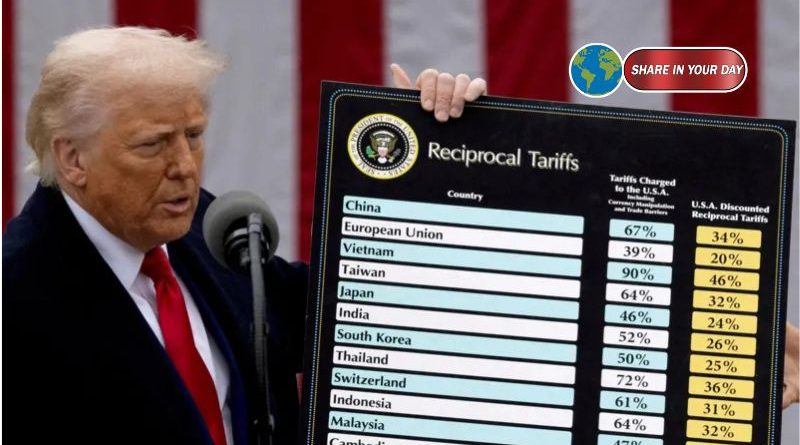US Supreme Court Poised for Landmark Ruling on Trump’s Tariffs
The US Supreme Court is set to hear a pivotal case that could reshape the future of American trade policy and have far-reaching economic implications. The Trump administration faces off against a coalition of small businesses and several states, challenging the legality of the tariffs President Trump imposed during his tenure. If the court sides with the plaintiffs, it could unravel the Trump administration’s trade strategy, reverse billions of dollars in tariff revenue, and alter the balance of presidential power in trade negotiations.
The case focuses on tariffs introduced under the 1977 International Emergency Economic Powers Act (IEEPA), which Trump used to impose sweeping duties on goods from countries like China, Mexico, and Canada. If the Supreme Court rules in favor of those challenging the tariffs, it could severely limit future presidential power to levy taxes on imports, placing the responsibility back in the hands of Congress.

A Defining Moment for Presidential Power
The case at hand raises critical questions about the extent of presidential authority. Legal analysts are divided over whether the Court will uphold Trump’s actions, but a ruling in his favor could set a dangerous precedent, granting future presidents greater unilateral power in trade negotiations.
The Trump administration invoked the IEEPA in early 2018, justifying the tariffs by claiming that foreign imports represented a national security threat. While the White House initially targeted goods from China, the scope of the tariffs quickly expanded to include products from virtually every country. Critics argue that the law does not specifically authorize the president to impose tariffs, especially on the grounds of trade deficits or foreign policy leverage.
“The Constitution gives Congress the power to regulate trade, and we believe tariffs are an essential part of that,” said Bill Harris, co-founder of Cooperative Coffees, one of the many businesses directly impacted by the tariffs. “This is a test of whether the president can sidestep Congress to make sweeping decisions that affect businesses and consumers.”
Economic Fallout for American Businesses
For many businesses, the stakes are personal. The tariffs have already caused significant disruption across industries, with companies like Learning Resources — a toy retailer based in the US — facing losses of up to $14 million this year. CEO Rick Woldenberg, whose company imports goods from overseas, has had to alter the manufacturing of hundreds of products as a direct result of these tariffs.
“They’ve thrown our business into unbelievable disruption,” Woldenberg said. “We’re just trying to stay afloat.”
Likewise, Bill Harris of Cooperative Coffees explained that his business has already paid $1.3 million in tariffs since April 2023, and despite the potential for a refund, the financial strain is severe. “This has been an energy drain like I’ve never seen,” Harris added. “It dominates all our conversations, and it’s emotionally exhausting for everyone involved.”
Despite the hardships, few businesses are confident that the Court will rule in their favor. Many are preparing for a worst-case scenario, where the tariffs stay in place and businesses must find ways to adjust to the new economic reality.
Congress vs. The White House: A Constitutional Debate
This case has turned into a broader debate about the separation of powers in the US government. While the White House argues that tariffs are an essential tool for national security and trade negotiations, opponents contend that only Congress has the constitutional right to impose taxes on imports.
Over 200 members of Congress, including Democrats from both chambers and one Republican, Senator Lisa Murkowski, have filed a brief urging the Supreme Court to strike down the tariffs. These lawmakers argue that the national emergency declared by Trump is not sufficient grounds to bypass Congress’s power to regulate commerce.
The Senate itself has also expressed disapproval, with bipartisan resolutions introduced to reject Trump’s tariff policies, including the emergency declaration. Although these resolutions are unlikely to gain traction in the House, they have served as a symbolic rebuke of the White House’s tariff strategy.
Implications for Global Trade
Beyond the borders of the United States, the potential consequences of this ruling extend far and wide. Countries that have been impacted by Trump’s tariffs — from European Union members to Swiss chocolate manufacturers — are awaiting the Supreme Court’s decision before proceeding with long-term trade agreements with the US.
John Clarke, a former director of international trade at the European Commission, noted that the European Parliament is holding off on ratifying trade deals with the US until the legal landscape around tariffs becomes clearer. “They’re not going to act on this until they see the outcome of the Supreme Court decision,” Clarke said.
Similarly, in Switzerland, businesses like Chocolats Camille Bloch have felt the economic pinch of new US tariffs. “We’ve had to absorb a third of the cost of these tariffs, and it’s wiped out profits for our US exports,” said Daniel Bloch, the company’s owner. While Bloch hopes for a ruling that eliminates the tariffs, he remains cautious about the future.
A Divisive Legal Battle
As the Supreme Court considers the case, its decision will reverberate across both the political and economic landscape. Whether the justices will uphold Trump’s tariffs or strike them down remains uncertain, but the decision is sure to have lasting consequences. The Court’s ruling could either solidify the president’s authority to make unilateral trade decisions or reassert the constitutional role of Congress in regulating commerce.
Legal experts predict that the Court may avoid addressing larger constitutional questions, instead focusing on whether the emergency powers used by Trump are justified under the law. However, with six of the nine justices appointed by Republicans, including three by Trump himself, the outcome remains unpredictable.
Conclusion: A Turning Point for US Trade Policy
As the nation waits for a decision, businesses, lawmakers, and foreign governments will be watching closely. If the Court rules against the tariffs, it could force the White House to find alternative means for imposing trade penalties, such as using other legal provisions that require more formal processes and public notice.
Regardless of the outcome, this landmark case highlights the intense and evolving nature of US trade policy under President Trump. While the legal battle may soon be over, the ramifications for US businesses, global trade, and presidential power are far from settled.




